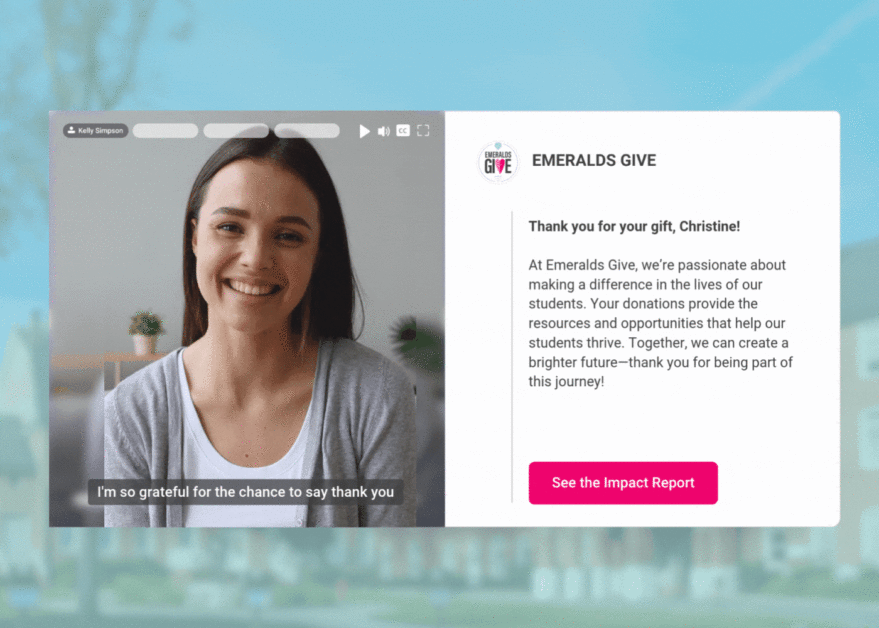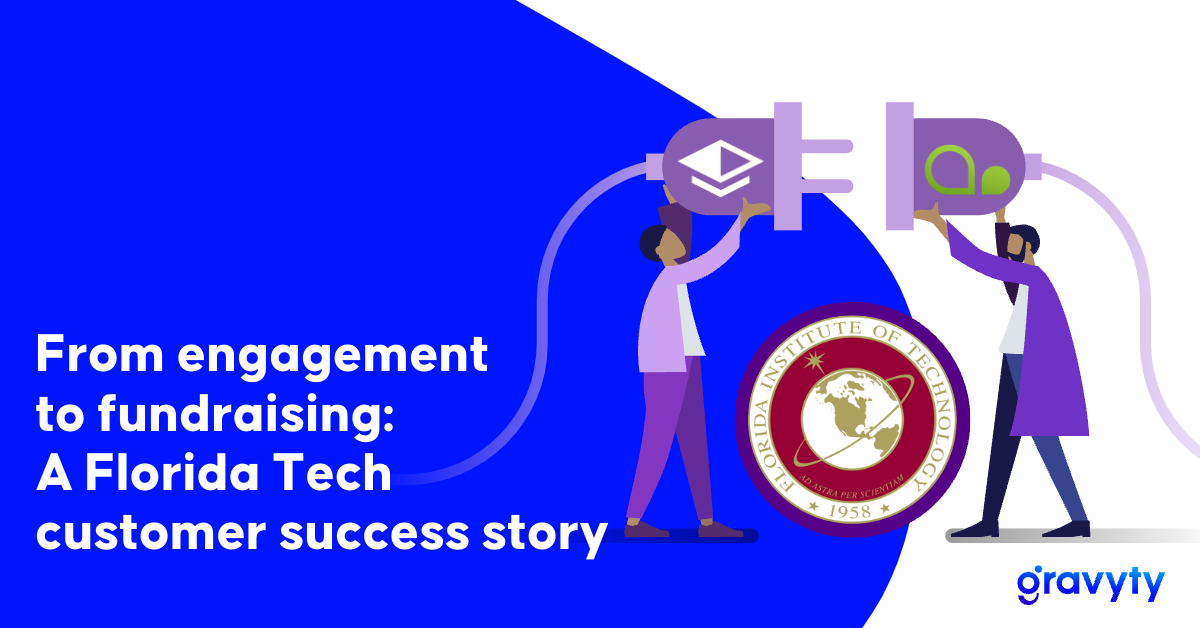Is your institution prepared to adapt to a new funding landscape? What Advancement teams need to know

Higher education is at a crossroads. For years, Advancement professionals have relied on a stable mix of tuition, government grants, and loyal alumni giving to support their institutions. But the ground is shifting rapidly.
Today’s advancement leaders are being asked to do more with less. Enrollment is dropping. State and federal funding streams are increasingly uncertain. Donor participation is declining. And the economy is constantly throwing curveballs.
If you feel like the pressure is building, you’re not alone.
But there’s good news, too: institutions that act now by embracing agility, personalization, and the right technology can not only survive these challenges but build a more resilient, future-ready fundraising operation.
A new era of Advancement: 6 major shifts in the landscape
Let’s break it down. Advancement leaders are facing a convergence of challenges that impact every part of the donor lifecycle:
1. Government grants and public funding are unpredictable
Institutions can no longer depend on federal or state funding to close budget gaps. With the Trump administration calling for sweeping federal funding freezes targeting several US colleges and universities, higher education leadership at many institutions have been compelled to implement drastic cost-cutting measures such as hiring freezes, layoffs, and slashed programs.
Andrew Martin
Chancellor, Washington University
For Advancement teams, these developments signify a pressing need to adapt to a rapidly changing financial landscape. The erosion of traditional funding sources highlights the importance of diversifying revenue streams and enhancing fundraising strategies to ensure institutional resilience.
2. Declines in student enrollment are shrinking the tuition—and donor—pipeline
Tuition revenue, once a cornerstone of financial stability for higher ed, is steadily declining as enrollment continues to drop. This year, a predicted “enrollment cliff” due to a shrinking college-aged population is triggering a financial panic amongst institutions who rely heavily on tuition revenue to run operations smoothly.
Public universities in states like West Virginia, Pennsylvania and Georgia have slashed academic programs, merged departments, or closed campuses entirely to stay afloat.
For Advancement teams, that means intensified pressure to fill financial gaps through private support—often without additional resources or headcount. Tuition shortfalls don’t just affect the finance office; they put added pressure on Advancement leaders, whose campaigns are now mission-critical to institutional survival.
3. Donor participation is falling, and retention is difficult
Fewer donors are giving, and when they do, they’re less likely to give again. In fact, 2024 marked the fourth consecutive year that the donor retention rate has declined from the previous year—the most pronounced drop among smaller donor segments.
For higher ed, the numbers are even more sobering. Young alumni giving rates have plummeted by 18% over the past decade, caused by a reported lack of meaningful engagement or value beyond solicitation requests.
What’s driving the trend? Competing priorities, donor fatigue, and lack of personalization are key culprits. A donor who gave during your giving day may feel like they will never hear from your institution again, except for another ask next year.
That’s why retention and stewardship aren’t just soft goals, but essential ingredients to pipeline growth. Advancement teams need scalable, automated ways to create meaningful touchpoints year-round, not just during campaign season.
4. Donor expectations are evolving—and personalization isn’t optional
We live in an age of digital convenience. From same-day deliveries to streaming recommendations, people are used to experiences tailored just for them. And that expectation doesn’t turn off when they give to their alma mater.
A recent Salesforce survey revealed that 76% of consumers get frustrated when communications aren’t personalized, and 71% expect organizations to deliver customized experiences. Your donors are consumers, too.
In philanthropy, this means that donors expect:
- Acknowledgment and appreciation, not just receipts.
- Timely, relevant, and emotionally resonant communication.
- More than just a personalized subject line or greeting.
Fundraisers, of course, want to meet these expectations, but the reality of managing thousands of donors with a small team makes personalization feel out of reach.
The solution? Intelligent automation. Tools like AI-powered portfolio management, automated video messaging, lifecycle-based email journeys, and dynamic segmentation can help even lean teams deliver personalized engagement at scale—without adding hours to their already packed schedules.
5. Small teams, big goals, and a widening capacity gap
Staffing challenges are hitting higher ed hard. Burnout is real—and Advancement teams are not immune. According to a Forbes report, 46% of fundraising professionals said they plan to leave their current roles within two years, and 23% said nonprofits are not even in their future plans.
With shrinking teams and growing expectations, Advancement professionals are juggling more tasks, more portfolios, and more pressure. Meanwhile, new technologies, communication channels, and data systems are increasing the complexity of the job.
Advancement teams understand the challenge firsthand: your institution expects record-breaking giving day results, higher retention, and upgraded mid-level donors. But you’re also training student callers, writing appeal copy, and managing CRM exports. Sounds easy, right?
To close the gap, institutions need more than just more people. They need platforms that automate the heavy lift like identifying who to contact, when, and how with systems that integrate into existing CRMs and workflows without disruption.
Future-ready Advancement: 5 tips to navigate the new fundraising landscape
If there’s one thing advancement professionals have proven time and time again, it’s that they are highly adaptable.
The rules have changed when it comes to higher education advancement. Institutions can no longer depend on steady public funding, reliable enrollment, or donor loyalty to sustain their missions. Advancement leaders are now the drivers of growth, resilience, and innovation on campus.
To succeed in this new landscape, teams need more than grit. Here are five proven ways to set your institution up for success amidst uncertainty and change:
1. Look at the bigger picture
The fact is, tomorrow’s major donors are sitting in your classrooms today. If your fundraising strategy starts with alumni and ends with annual giving, you’re missing key pieces of the puzzle. The most resilient advancement strategies in 2025 take a lifecycle approach—one that connects the dots between student engagement, alumni relations, and donor stewardship.
Invest early by weaving philanthropy into the student experience through digital campaigns, peer-to-peer challenges, and meaningful touchpoints. Then, continue that momentum through intentional alumni engagement; personalized emails, volunteer opportunities, and digital communities that keep your graduates close. When you approach fundraising holistically, you’re building a pipeline that sustains your mission for decades.
Quick tip: Create a 12-month engagement map that outlines when and how you’ll connect with students, recent grads, and long-lapsed alumni before the next fiscal year kicks off.
2. Use tech to multiply your capacity
Let’s face it: your goals are growing, but your team isn’t. The answer? Technology that acts like another member of your team. AI and automation aren’t about replacing fundraisers; they’re about empowering them to spend more time on what matters most: building relationships.
From AI-powered outreach to plug-and-play giving forms and gamified campaign sites, the right tools make it easier for donors to give…and easier for your team to keep up.
Want to make a great first impression? Send a personalized video to introduce a new gift officer. Running a giving day? Use automated video and email outreach to drive engagement before, during, and after the event without lifting a finger. It’s time to do more—with less stress.
Quick tip: Pick one manual process (like giving day stewardship or donor welcome emails) and automate it using your existing tools. Small wins = big momentum.
3. Leverage data to inform smarter strategies
In an era of uncertainty, your best bet is data that drives action. AI can help you identify which donors are most likely to give right now, when to reach out, and what message will resonate. But it’s not just about individual touchpoints—it’s about smarter portfolio building. Use your giving day results to surface hidden prospects and build discovery portfolios in minutes.
With tools like Gravyty, you can turn a one-day spike in giving into a year-round engagement strategy. The result? Less guesswork, more meaningful connections, and a pipeline that reflects where your greatest opportunities actually are.
Quick tip: After your next giving day, automatically generate a list of first-time donors and ask your AI tools to recommend outreach cadences for discovery officers.
4. Personalize donor journeys that build lasting trust
Mass emails and one-size-fits-all appeals just don’t cut it anymore. Today’s donors expect a personalized experience just like their experience with their favorite apps, brands, and services. That means reaching the right donor, on the right platform, with the right message at the right time.
Think: a text message before reunion weekend, a video update after their scholarship recipient speaks at your gala, or a handwritten note celebrating a giving anniversary. By personalizing across channels and going beyond the ask, you build trust, loyalty, and long-term impact.

Quick tip: Start by segmenting your donor base into three groups—first-time, repeat, and major donors—and tailor your outreach cadence and content for each.
5. Automate manual work so fundraisers can focus on relationships
Let’s be real: too many hours are lost to spreadsheets, mass emails, and list management. Automation can handle all that—and free your team up to do what they do best: build genuine relationships.
With AI-driven donor prioritization, your fundraisers get a daily list of who to reach out to and why. No more hunting through CRMs or chasing down engagement history. Plus, integrated tools surface hidden gem donors who are showing signs of interest but haven’t yet raised their hand. That’s time saved and opportunities gained.
Quick tip: Empower each frontline fundraiser with a “top 10 to touch” list each week—automated, refreshed, and prioritized based on recent engagement data.
Your partner in navigating what’s next
Gravyty’s AI-powered student, alumni and donor engagement platform is built for higher education fundraisers like you, navigating funding complexities, juggling priorities, and striving to build stronger, more connected donor communities with limited time and teams.
Whether you’re launching a record-breaking giving day, segmenting and stewarding mid-level donors, or just trying to send more personal outreach without losing sleep, Gravyty helps you get it done, efficiently and effectively.
With Gravyty, you can:
- Engage, inspire and steward your community of prospective and existing donors
- Automate stewardship, appeals, and outreach across channels
- Personalize every touchpoint using AI-driven insights
- Scale peer-to-peer and digital fundraising initiatives
- Integrate seamlessly with your existing CRM
- Track real-time performance and results with confidence
In a time of shrinking resources and rising expectations, Gravyty helps advancement teams do more with less. Want to see how it works? Contact sales today to learn more.




